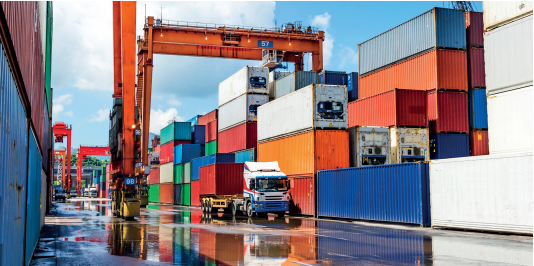An increase in US export activity and European imports has reversed the downward trend in rates for the container shipping industry, according to the latest XSI® Public Indices report from Xeneta.
 The Oslo headquartered freight rate benchmarking and market intelligence platform revealed that its index, which utilises a database of over 85 million contracted freight rates, indicates a month-on-month rise in long-term rates of 2.5%. Although relatively modest, the climb halts a decline that has effectively been ongoing since August 2018.
The Oslo headquartered freight rate benchmarking and market intelligence platform revealed that its index, which utilises a database of over 85 million contracted freight rates, indicates a month-on-month rise in long-term rates of 2.5%. Although relatively modest, the climb halts a decline that has effectively been ongoing since August 2018.
XSI® is based on constantly updated crowd-sourced rates pooled from hundreds of leading global players, including shippers such as Electrolux, Nestlé, Unilever, Tata Steel and Continental. This wealth of exclusive data covers over 160,000 port-to-port pairings, allowing Xeneta to provide unique insight into the constantly evolving world of global freight rates.
“Against the backdrop of mixed financial results for the major carriers - with the ONE alliance all posting negative figures, while Maersk recorded solid profits (albeit with a disappointing growth forecast for 2019) - and on-going concerns about new tariffs in the China-US ‘trade war’, this upwards trend provides somewhat positive news for the container industry,” explained Xeneta CEO Patrik Berglund.
He continued: “As ever in this highly complex and unpredictable segment, it’s not straightforward – with some regions less encouraging than others, while Brexit and the 1 March deadline for China-US trade negotiations loom large – but there are notable performances here. That is something that will no doubt be savoured. Especially in the US.”
The US export indicator in XSI® experienced an 8% rise. As such the declines of the previous year have been reversed, with the benchmark now on par with March 2018 values. Imports remained largely unchanged, down just 0.1%.
The European market is similarly dynamic. Here the import benchmark climbed by 3.9%, translating to a year-on-year rate increase of 7.1% (and a 2.5% rise since the end of 2018). However, Berglund warns that the introduction of Ocean Alliance’s seventh loop service in April (with ten 13-14,000 TEU ships from Evergreen) has the potential to outstrip demand and exert downward rates pressure. The European export indicator rose 0.5%.
Patrik said that the New Year hadn’t got off to a good start in the Far East. “The import performance saw a monthly fall of 2.6%, continuing a long-term decline that has seen the benchmark slump by 14.2% year-on-year. Exports are more stable, down 0.2% but 0.9% above last year. There are complex factors at play here, but it’s impossible not to see the shadow of Presidents Trump and Xi falling over regional developments.”
“We can only be certain of further uncertainty,” he concludes. “So, it’s vital that all the stakeholders in the container shipping value chain avail themselves of the latest intelligence to ensure they enter contract negotiations fully informed and ready to get the best deal. No one can afford to ignore what’s going on around them right now.”
The full XSI report is available here.